Length 16 m First flight May 19, 1967 Number of seats 2 | Wingspan 8.22 m Engine types Snecma Atar, Turbojet | |
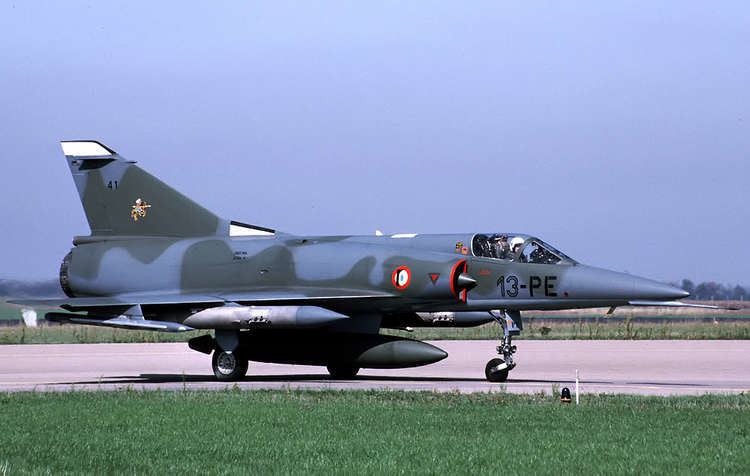 | ||
Dassault mirage 5
The Dassault Mirage 5 is a supersonic attack aircraft designed in France by Dassault Aviation during the 1960s, and manufactured in France and a number of other countries. It was derived from Dassault's popular Mirage III fighter, and spawned several variants of its own, including the IAI Kfir. The aircraft is capable of nuclear weapons delivery.
Contents
- Dassault mirage 5
- Early development
- Mirage 5
- Belgian production
- Mirage 50
- Mirage 5 ROSE
- Variants
- Current
- Former
- Specifications Mirage 5F
- References
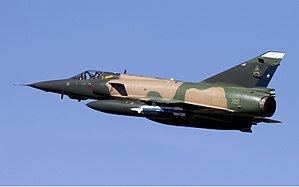
Early development
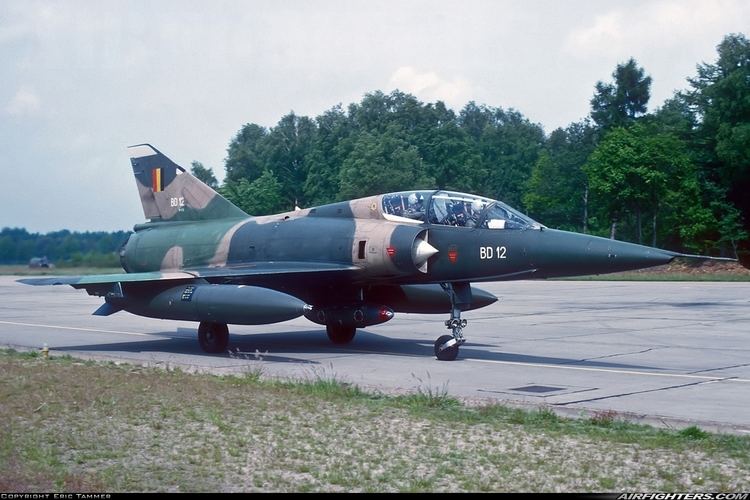
The Mirage 5 grew out of a request to Dassault from the Israeli Air Force. Since the weather over the Middle East is clear and sunny most of the time, the Israelis suggested removing avionics, normally located behind the cockpit, from the standard Mirage IIIE to reduce cost and maintenance, and replacing them with more fuel storage for attack missions. In September 1966, the Israelis placed an order for 50 of the new aircraft.
Mirage 5
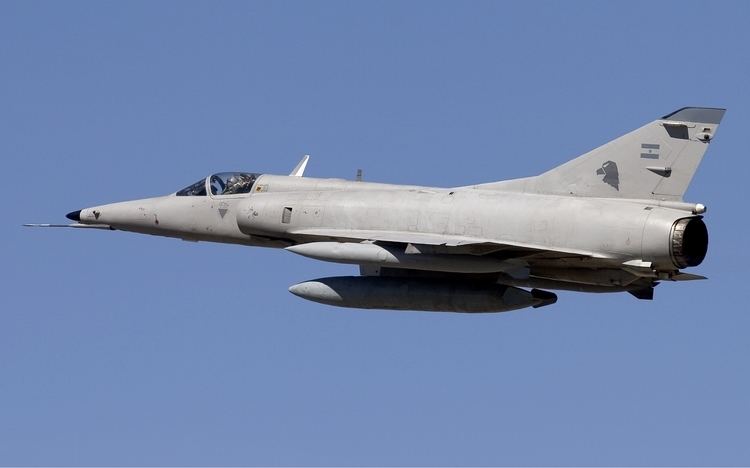
The first Mirage 5 flew on 19 May 1967. It looked much like the Mirage III, except that it had a long slender nose that extended the aircraft's length by about half a metre. A pitot tube was distinctively moved from the tip of the nose to below the nose in the majority of Mirage 5 variants.
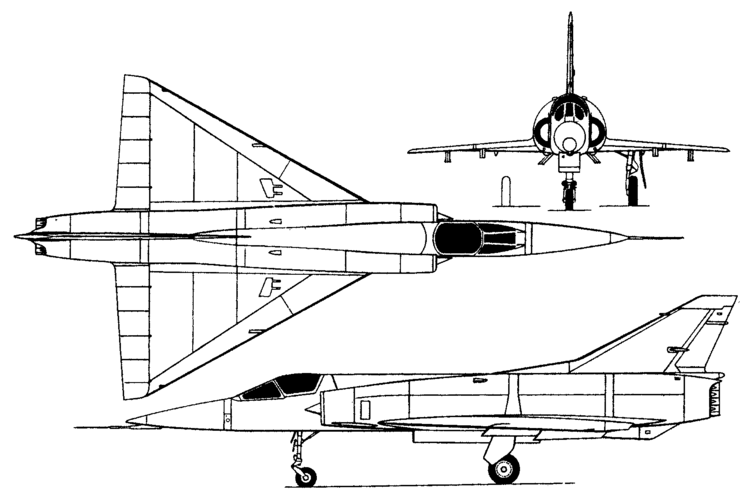
The Mirage 5 retained the IIIE's twin DEFA guns, but added two additional pylons, for a total of seven. Maximum warload was 4,000 kg (8,800 lb). Provision for the SEPR rocket engine was deleted.
Rising tensions in the Middle East led French President Charles de Gaulle to embargo the Israeli Mirage 5s on 3 June 1967. The Mirages continued to roll off the production line, even though they were embargoed, and by 1968 the batch was complete and the Israelis had provided final payments.
In late 1969, the Israelis, who had pilots in France testing the aircraft, requested that the aircraft be transferred to Corsica, in theory to allow them to continue flight training during the winter. The French government became suspicious when the Israelis also tried to obtain long-range fuel tanks and cancelled the move. The Israelis finally gave up trying to acquire the aircraft and accepted a refund.
Some sources claim that cooperation with France resumed outside the public's eye and Israel received 50 Mirage 5s in crates from the AdA, while the AdA took over the 50 aircraft originally intended for Israel, as Mirage 5Fs. Officially, Israel claimed to have built the aircraft after obtaining complete blueprints, naming them IAI Nesher.
Like the Mirage IIIE, the Mirage 5 was popular with export customers, with different export variants fitted with a wide range of different avionics. While the Mirage 5 had been originally oriented to the clear-weather attack role, with some avionic fits it was refocused to the air-combat mission. As electronic systems became more compact and powerful, it was possible to provide the Mirage 5 with increased capability, even though the rear avionics bay had been deleted, therefore in some sub-versions, the result was a "reinvented" Mirage IIIE.
Reconnaissance and two-seat versions of the Mirage 5 were sold, with the designation Mirage 5R, and Mirage 5D respectively. However, a little consideration of the differences between a Mirage III and a Mirage 5 quickly shows that these designations were simply for marketing purposes. There was no clear dividing line between the configuration of a Mirage III reconnaissance or trainer version and that of a Mirage 5 equivalent, and were one and the same in many cases.
The Mirage 5 was sold to Abu Dhabi, Belgium, Colombia, Egypt, Gabon, Libya, Pakistan, Peru, Venezuela, and Zaire, with the usual list of subvariant designations and variations in kit. The Belgian aircraft were fitted with mostly US avionics, and Egyptian aircraft fitted with the MS2 attack avionics system from the Dassault-Dornier Alpha Jet.
In 1978 and 1980, Israel sold a total of 35 of their Neshers plus four Nesher trainer aircraft (Nesher Ts) to Argentina, where they were locally known first as Daggers and after their last upgrade as Fingers. The Argentines lost two IIIEA and 11 Daggers during the Falklands War in 1982, and, as a measure of solidarity, the Peruvians transferred ten of their Mirage 5s to Argentina, under the name Mirage Mara to help alleviate their losses.
South Africa purchased five Nesher trainers for trials during its own Atlas Cheetah fighter programme. All the aircraft were eventually upgraded to Cheetah D standard.
Chile incorporated some Mirage 5s under name Mirage Elkan.
A total of 582 Mirage 5s were built, including 51 Israeli Neshers.
Belgian production
In 1968, the Belgian government ordered 106 Mirage 5s from Dassault to re-equip No 3 Wing at Bierset air base. All aircraft but the first one were to be license-built by SABCA in Belgium. Component production at the SABCA Haren plant near Brussels was followed by assembly at the SABCA plant at Gosselies airfield, near Charleroi. The ATAR engines were produced by FN Moteurs at this company's Liège plant. SABCA production included three versions: Mirage 5BA for the ground-attack role, Mirage 5BR for the reconnaissance role and Mirage 5BD for training and conversion.
By the end of the 1980s, a MIRage Safety Improvement Program (MIRSIP) was agreed to by parliament, calling for 20 low-time Mirages to be upgraded. Initial plans included a new more powerful engine, but this idea was abandoned to limit cost. The upgrade eventually included a new state-of-the-art cockpit, a new ejection seat, and canards to improve takeoff performance and overall maneuverability. A new government canceled the MIRSIP however. SABCA, having a watertight contract, being allowed to carry out the update. After completion, the Belgian government sold all 20 aircraft to Chile at a loss.
Mirage 50
The Atar 09K-50 engine, however, was still a good idea, and fit of this engine led to the next Mirage variant, the Mirage 50, during the 1970s. The uprated engine gave the Mirage 50 better takeoff and climb characteristics than its predecessors. While the Mirage 50 also incorporated new avionics, such as a Cyrano IV radar system, it did not prove popular in export sales, as the first-generation Mirage series was becoming obsolete.
Chile ordered a quantity of Mirage 50s, receiving both new production as well as updated Armée de l'Air Mirage 5s. The Chilean aircraft were later modernised along the lines of the IAI Kfir as the ENAER Pantera. The Pantera incorporates fixed canards and other aerodynamic improvements, as well as advanced avionics. These aircraft have an extended nose to accommodate some of the new systems.
In 1990, Dassault upgraded a batch of Venezuelan Mirage IIIEs and 5s to Mirage 50 standards, with the upgrades designated Mirage 50M.
Mirage 5 ROSE
The Project ROSE (Retrofit Of Strike Element) was an upgrade programme launched by the Pakistan Air Force to provide a midlife update to its aging Mirage III and Mirage 5 aircraft with modern avionics. In the first phases of the project, around 33 former Australian Air Force Mirage III fighters were upgraded and designated ROSE I. The PAF then procured surplus Mirage 5F fighters in the late 1990s from the French Air Force in two batches. Around 20 fighters from the first batch were upgraded with new cockpits, navigation/attack suites, defensive aids systems and a forward-looking infra-red (FLIR) sensor under the aircraft's nose/cockpit, being designated ROSE II. The cockpits included new MFDs, HUDs, HOTAS controls, radar altimeters and RWRs.
Additionally, there were 14 Mirage 5F fighters from the second batch that were upgraded similarly but with newer systems and designated ROSE III. The FLIR sensors allow the Mirage 5 ROSE fighters to specialise in the night-time attack role. As of 1995, the Mirage 5 has been donated into the service of the Pakistan Navy by the PAF and has been transformed into combat naval squadron as of 2005.
Variants
Current
Former
Specifications (Mirage 5F)
Data from Encyclopedia of World Military Aircraft
General characteristics
Performance
Armament
